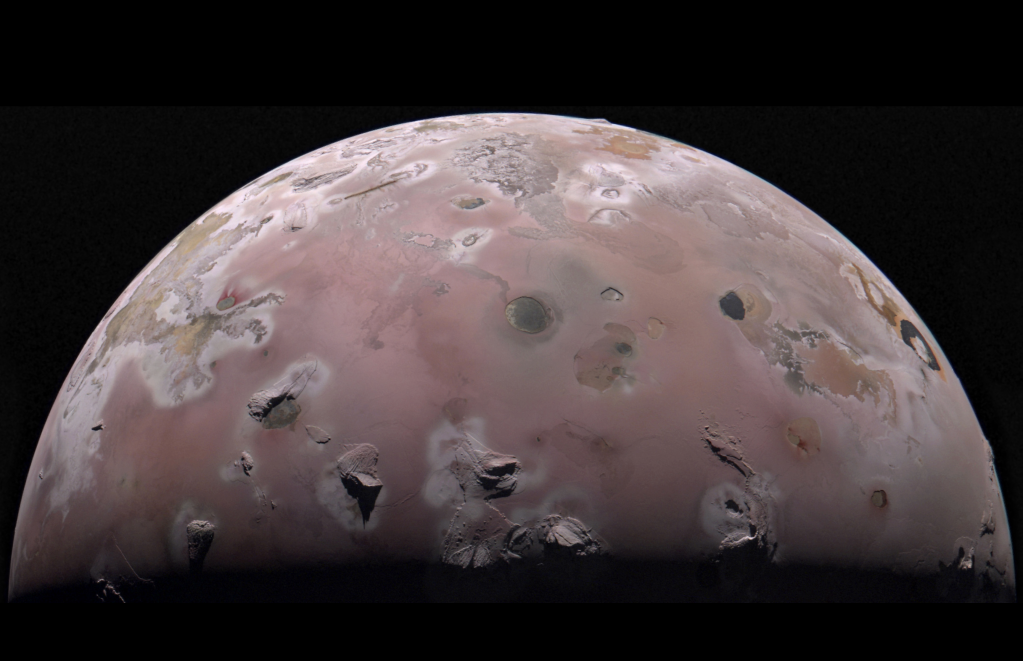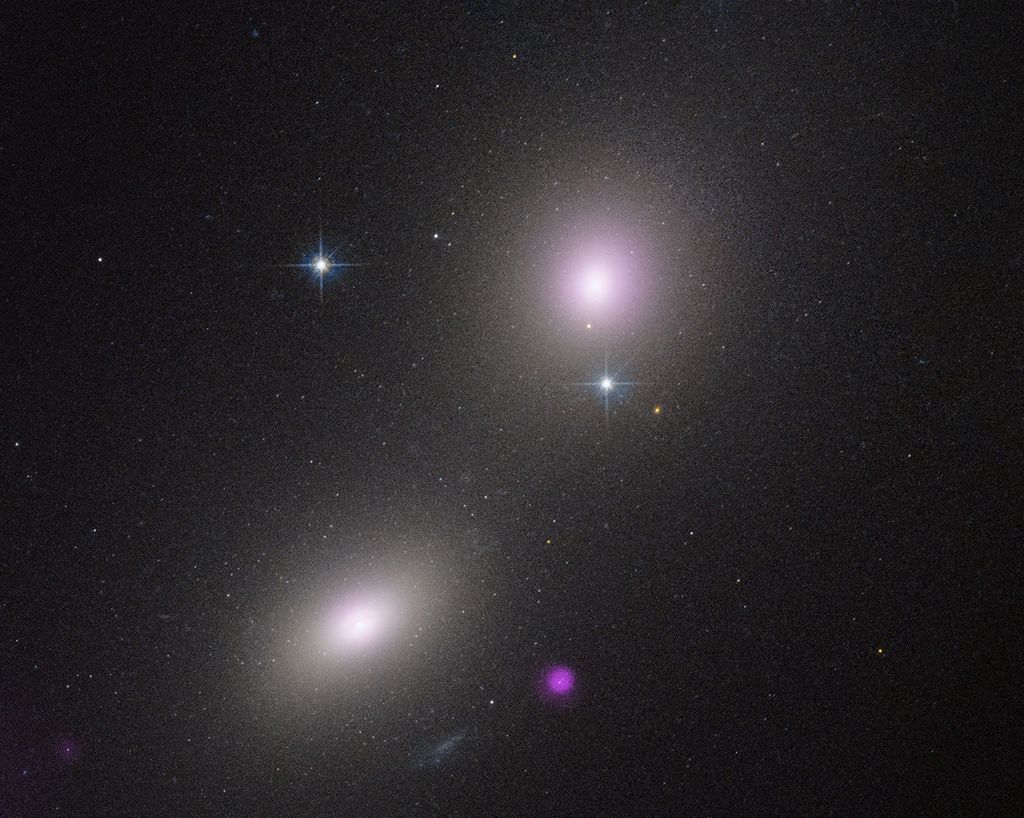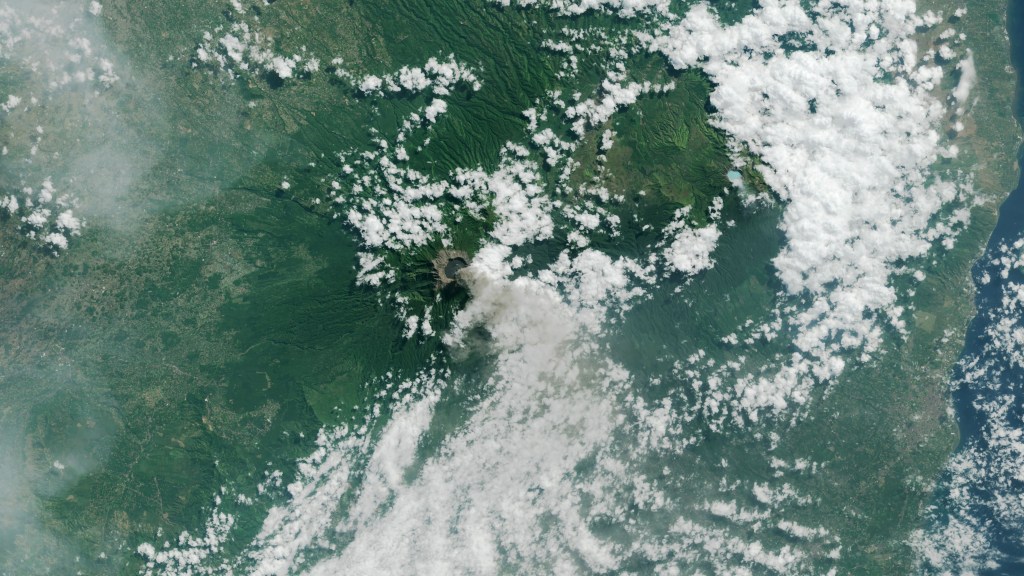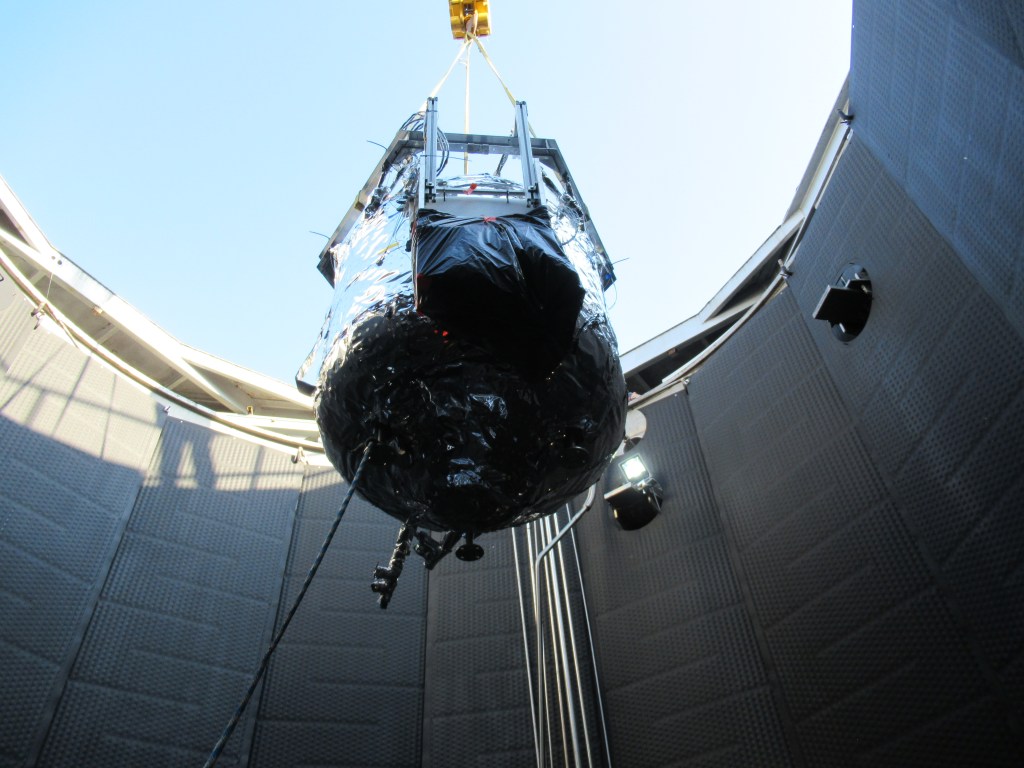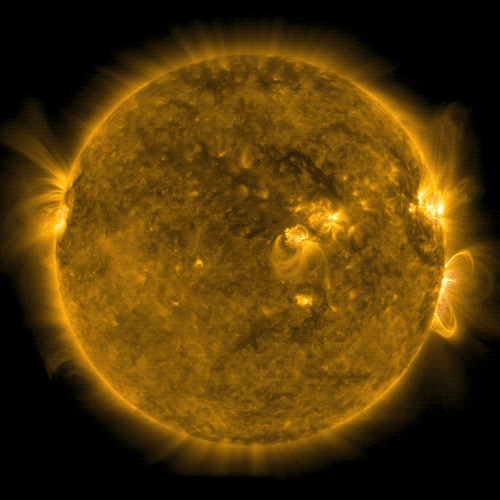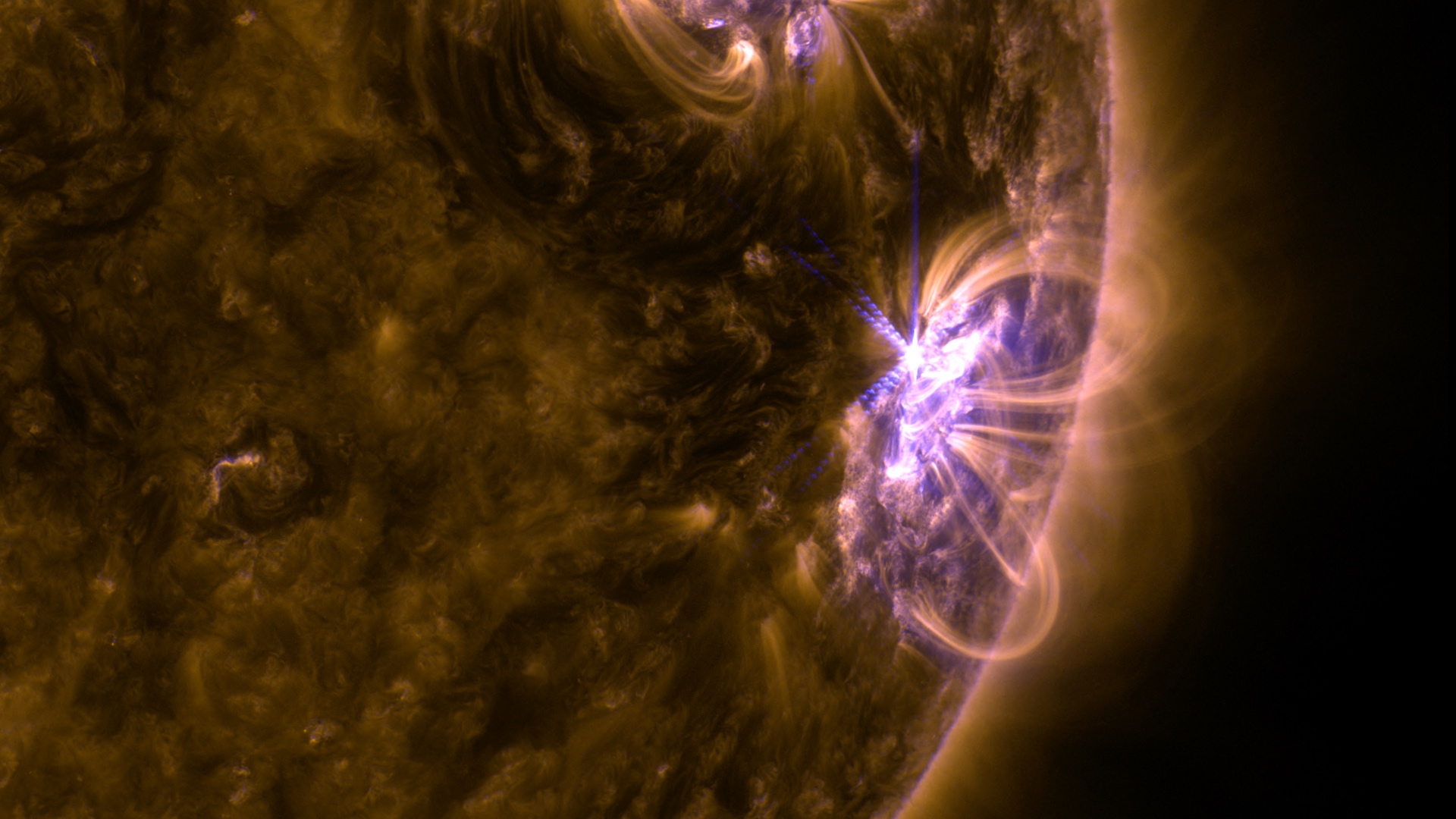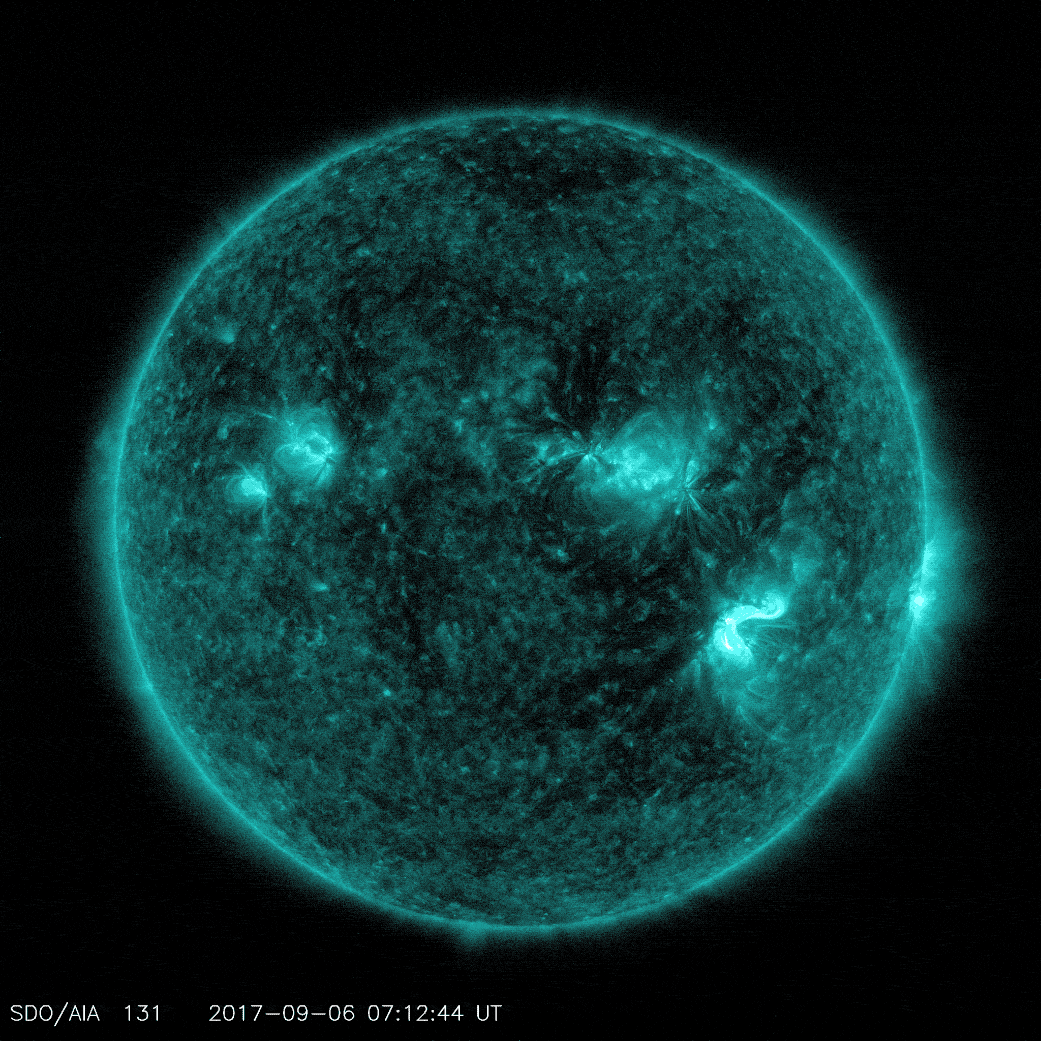
Download additional imagery from NASA’s Scientific Visualization Studio
The sun emitted a significant solar flare, peaking at 12:06 p.m. EDT on Sept. 10, 2017. NASA’s Solar Dynamics Observatory, which watches the sun constantly, captured an image of the event. Solar flares are powerful bursts of radiation. Harmful radiation from a flare cannot pass through Earth’s atmosphere to physically affect humans on the ground, however — when intense enough — they can disturb the atmosphere in the layer where GPS and communications signals travel.
To see how this event may affect Earth, please visit NOAA’s Space Weather Prediction Center at http://spaceweather.gov, the U.S. government’s official source for space weather forecasts, alerts, watches and warnings.
This flare is classified as an X8.2-class flare. X-class denotes the most intense flares, while the number provides more information about its strength. An X2 is twice as intense as an X1, an X3 is three times as intense, etc.
This flare is the capstone on a series of flares from Active Region 2673, which was identified on Aug. 29 and is currently rotating off the front of the sun as part of our star’s normal rotation.
Credit: NASA/Goddard/SDO
Download this video in HD formats from NASA Goddard’s Scientific Visualization Studio
Credits: NASA’s Goddard Space Flight Center/Scott Wiessinger
Download this video in HD formats from NASA Goddard’s Scientific Visualization Studio
Download additional imagery at: https://svs.gsfc.nasa.gov/12706
By Karen C. Fox
NASA’s Goddard Space Flight Center, Greenbelt, Md.
Sept. 8, 2017 – M8.1 Flare
The sun emitted one mid-level solar flare on Sept. 8, 2017. The flare peaked at 3:49 a.m. EDT. This is the sixth sizable flare from the same active region since Sept. 4.
To see how this event may affect Earth, please visit NOAA’s Space Weather Prediction Center at http://spaceweather.gov, the U.S. government’s official source for space weather forecasts, alerts, watches and warnings.
The flare is classified as an M8.1 flare. M-class flares are a tenth the size of the most intense flares, the X-class flares. The number provides more information about its strength. An M2 is twice as intense as an M1, an M3 is three times as intense, etc.
Sept. 7, 2017 – Sun Shows Two Mid-Level Solar Flares
The sun emitted two mid-level solar flares on Sept. 7, 2017. The first peaked at 6:15 a.m. EDT. The second, larger flare, peaked at 10:36 a.m. EDT. These are the fourth and fifth sizable flares from the same active region since Sept. 4.
To see how this event may affect Earth, please visit NOAA’s Space Weather Prediction Center at http://spaceweather.gov, the U.S. government’s official source for space weather forecasts, alerts, watches and warnings.
The first flare is classified as an M7.3 flare. The second as X1.3. X-class denotes the most intense flares, while the number provides more information about its strength. An X2 is twice as intense as an X1, an X3 is three times as intense, etc. M-class flares are a tenth the size of X-class flares.
Sept. 6, 2017 – Two Significant Solar Flares Imaged by NASA’s SDO
The sun emitted two significant solar flares on the morning of Sept. 6, 2017. The first peaked at 5:10 a.m. EDT and the second, larger flare, peaked at 8:02 a.m. EDT. NASA’s Solar Dynamics Observatory, which watches the sun constantly, captured images of both events. Solar flares are powerful bursts of radiation. Harmful radiation from a flare cannot pass through Earth’s atmosphere to physically affect humans on the ground, however — when intense enough — they can disturb the atmosphere in the layer where GPS and communications signals travel.
To see how this event may affect Earth, please visit NOAA’s Space Weather Prediction Center at http://spaceweather.gov, the U.S. government’s official source for space weather forecasts, alerts, watches and warnings.
The first flare is classified as an X2.2 flare and the second is an X9.3 flare. X-class denotes the most intense flares, while the number provides more information about its strength. An X2 is twice as intense as an X1, an X3 is three times as intense, etc.
Both flares erupted from an active region labeled AR 2673, which also produced a mid-level solar flare on Sept. 4, 2017. The X9.3 flare was the largest flare so far in the current solar cycle, the approximately 11-year-cycle during which the sun’s activity waxes and wanes. The current solar cycle began in December 2008, and is now decreasing in intensity and heading toward solar minimum. This is a phase when such eruptions on the sun are increasingly rare, but history has shown that they can nonetheless be intense. The radio black out from this particular flare is already passed, and http://spaceweather.gov has more details.
Updates will be provided as needed.
Additional imagery at: https://svs.gsfc.nasa.gov/12706
By Karen C. Fox
NASA’s Goddard Space Flight Center, Greenbelt, Md.

